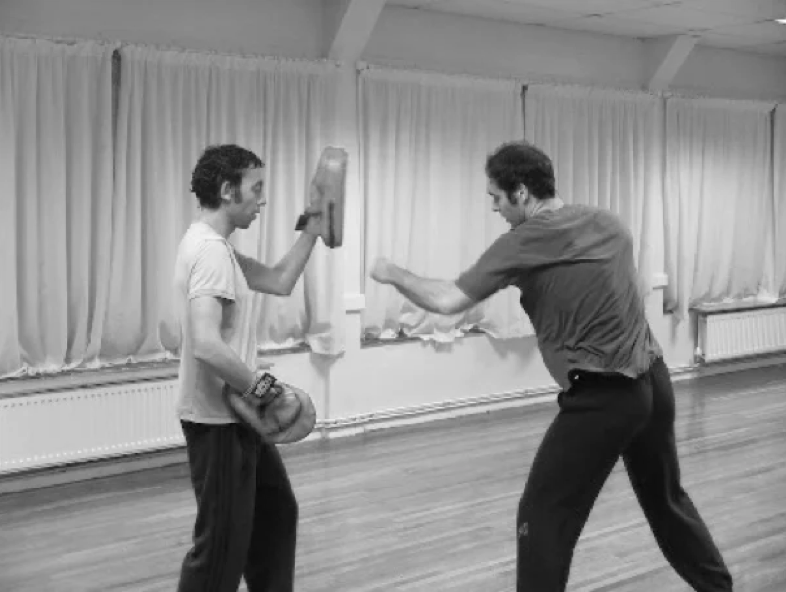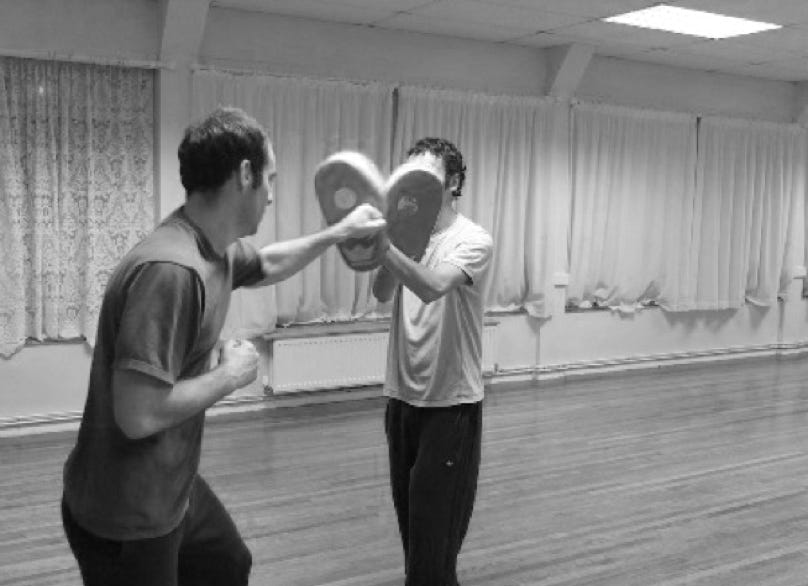
YuanYi QuanFa
Traditional Chinese Boxing

YuanYi QuanFa
Original Intent Boxing
Self Defence Training
I first came to Martial Arts because of experiencing a few instances of violence in my normal day to day life and a little later because I became a Police Officer. As a teenager I started to study Shaolin Kung Fu and Kick boxing continued for around ten years, when I joined the Police I realised I needed different skills (Police Officers punching and kicking people was considered a bad look) so I searched several martial arts before settling on XingYi and TaiJi.
Most people take up the study martial arts, at least in part, to develop some skills and confidence in self defence. With that in mind a very common question is; “what’s the best martial art for self defence?”
That is a very reasonable question and if you are coming from a background without any familiarity on the subject, quite a tricky one to answer. To help answer the question it helps to consider a few questions, the primary ones being: 1. Who is learning? 2. What if any prior experience do they have? 3. How old are they? 4. What if any circumstance do they expect to find themselves having to defend themselves?
The above four questions and others that may emerge in answering the first four can help you narrow down your requirements. If we look at Q4 above to illustrate how requirements can vary from case to case.
Are you planning a career in the Police or security work? Are you a parent worried about a child heading off to University in a strange town or possibly heading off around the world on a gap year adventure? Do you work in the night time economy and have to travel alone in the early hours? etc. etc.
As you can see the possibilities and therefore requirements can vary. If you’re in the Police or security line, you are often in a position where conflict can't be avoided, whereas everyone else should be focusing on minimising or better still avoiding physical conflict.
Martial Arts training won’t help if you leave your drink unsupervised in a bar and it gets spiked. Walking down an unlit rarely used alleyway in the early hours is an unnecessary risk if there is an alternative well lit route available, even if it is a longer way home.
If you go out with friends and they leave you alone in the middle of the night, get some new friends!
I’ve skimmed over just a few scenarios here in order to prompt a little introspection, knowing what you need is the first step in getting what you need.
In answer to the question what’s the best martial art? The answer is, what will give you the skills you need in the time that you have available? It is important to remember that like any other skill, self defence skills need to be practised with some regularity to keep them useful and reflexive.
Police and security, will have a high focus on grappling skills aimed at controlling and detaining people. Everybody else should be focusing on avoiding conflict and extricating themselves from the situation they find themselves in. That will usually involve using strikes, escaping from holds and making a quick exit.
When I teach self defence courses, I try to encourage the gaining of fitness and strength as a first step. Hard physical training does wonders for a person’s self confidence and self esteem. But more importantly having some strength above the average is immensely useful and if you are in the Police / Security area, pretty much essential.
Fitness in the form of cardio-vascular training is also really important, firstly because if you do have to fight it is exhausting and stressful so being able to keep your breath is essential. Secondly, when you get the chance you want to be able to escape, so again, CV fitness enables you to be able to run a good distance at a good pace is the surest way to avoid conflict. In conflict “absence of body” is always better than “presence of mind”.
While gaining fitness, technique training focuses on simple strikes, grab releases, low kicks and some simple ‘dirty tricks’.
So in a sentence, early training consists of: get fit, get strong, learn to hit and get mean.

